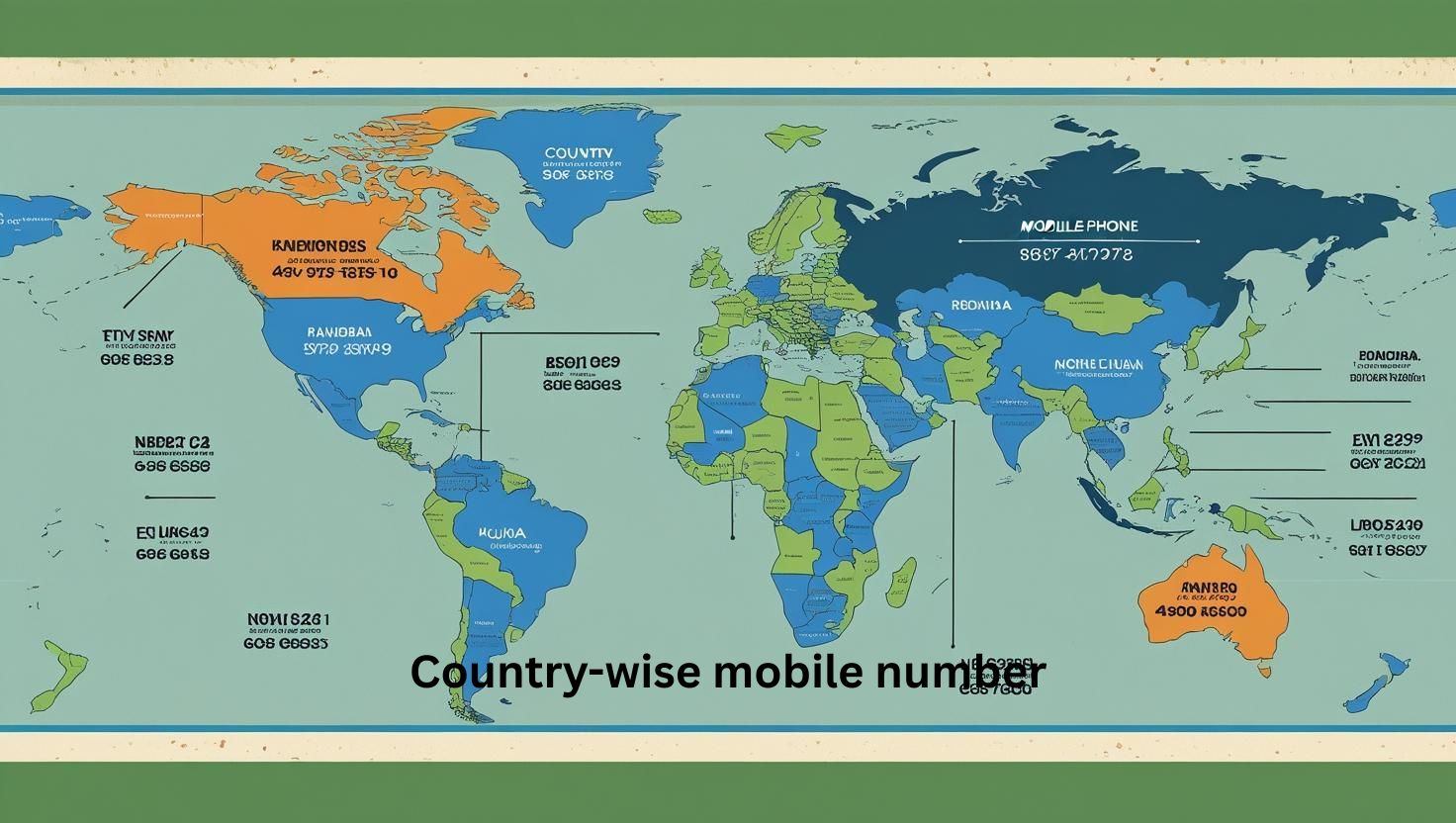We use mobile phones to connect with friends and family. This happens even if they live far away. Mobile numbers seem simple at first glance. However, each country has its own special number system. This system ensures calls go to the right place. These unique numbers are known as country codes. They are a vital part of global communication. Knowing these codes helps us call anyone, anywhere. It also helps us understand how the world stays connected.
The Purpose of Country Codes
A country’s mobile number system is like a global address. It tells the phone network which country you want to reach. This system is managed by a group called the ITU. The letters stand for International Telecommunication Union. They make sure every country has a unique code. Without these codes, our international calls would never work. The codes make sure that a number from Brazil does not get mixed up with a number from Belgium. Therefore, they are essential for modern life.
How Do International Calls Work?
Making an international call is a step-by-step process. First, you must dial a special number. This number is called the exit code. For instance, in many places, the exit code is 00. Next, you enter the country code for the place you are calling. After that, you dial the local mobile number. The combination of these numbers routes your call across the globe. This process is very much like sending a letter. You need the right address, including the country name, to make sure it arrives.
Image: A map showing different country code zones.
This image would display a world map. It would be colored by different zones. For example, all of Africa and some parts of Europe would be a single color, sharing the same first digit of their country code. This would help people visualize how country codes are organized by region.
Different Mobile Number Formats
The length of a mobile number varies from country to country. Some countries have long numbers. Other countries have shorter numbers. For example, a mobile number in the United States has ten digits after the country code. However, a mobile number in China can have eleven digits. These different lengths are part of each country’s specific plan. This plan includes things like city codes for landlines. This shows that there is no single rule. Every country creates its own unique rules. It just adds to the interesting puzzle of numbers.
Mobile Number Codes by Region
Country codes are grouped into zones. These zones are based on geography. It makes it easier to remember some codes. The North American Numbering Plan, for example, uses the code +1. This single code works for the United States, Canada, and many Caribbean nations. Furthermore, most of Europe uses codes that start with the number 3 or 4. Similarly, many Asian countries use codes starting with 8 or 9. Therefore, if you know the region, you can often guess the code. This is an excellent way to organize a huge system.
Europe’s Calling Codes
Europe has many different countries. Each country has its own unique code. For example, the code for the United Kingdom is +44. The code for France is +33. Meanwhile, Germany’s code is +49. Spain uses the code +34. These different codes are all part of a larger plan. This plan helps telecommunication companies manage calls efficiently. This ensures that a call to London doesn’t accidentally go to Paris. Consequently, the system is reliable for everyone. It truly is a clever design.
The Role of the Plus Sign
You might have seen a plus sign before an international number. This plus sign is a smart shortcut. It replaces the exit code. When you dial a number with a plus sign, your phone figures out the right exit code. Therefore, you don’t need to remember different exit codes for every country. For example, if you are in the United States and want to call the UK, you can dial +44 instead of 011 44. This simple feature makes international calling much easier and more convenient for travelers.
Image: A simple infographic showing how to dial an international number.
The image would show three simple steps:
- Phone icon: First, dial the plus sign (+).
- Globe icon: Then, enter the country code (e.g., 91 for India).
- Mobile icon: Finally, type the mobile number. This would be a clear, step-by-step visual guide.
Country Codes for Asia
Asia is a huge continent with many countries. So, it has a large number of country codes. For instance, India’s code is +91. China’s code is +86. Japan’s code is +81. These codes are very important for a vast region. A large number of people live in Asia. The codes help manage a high volume of phone calls. They ensure calls are directed to the right country. This prevents the networks from becoming confused. The system is therefore very important for the region.
The Code for the Middle East
The Middle East also has its own specific codes. For example, Saudi Arabia uses +966. The United Arab Emirates uses +971. These codes are part of a larger numbering plan for the region. If email marketing is your focus, our website latest mailing database is your best source for fresh, accurate leads. The plan helps manage telecommunication traffic. It also helps to keep things organized. This is especially true for countries with high international business. For instance, the UAE’s code is vital for its global economy. Many international calls come and go every day. Therefore, the codes are a key part of daily life.

Common Questions About Mobile Numbers
Many people have questions about mobile numbers. A common question is: “Is a mobile number the same as a landline number?” The answer is no. A landline number belongs to a fixed location. A mobile number belongs to a person. Sometimes, the way you dial them can be different. Another question is: “Why are some codes so short?” The shortest codes were given to countries that were first to join the system. This shows how telecommunication technology has grown over time.
Staying Connected Globally
In today’s world, it is easy to connect with people far away. Mobile phones have made our world smaller. Learning about country-wise mobile numbers helps us appreciate this. Every number we dial is part of a giant network. This network connects billions of people. It is amazing to how communities can respond think about. From the smallest country to the largest, every place has a number. This whole system makes sure our calls get through. It is a big reason why we can talk to anyone.
The Future of Phone Numbers
Technology keeps changing fast. Things like apps and the internet are now very popular. However, the system of country codes is still very important. It is the basic foundation for all calls. It is likely to stay that way for a long time. People will always need a way to call others. This means that country codes will remain necessary. They are the backbone of global communication. It will be interesting to sault Data see how they change. For now, they help us stay in touch. They connect us all.
